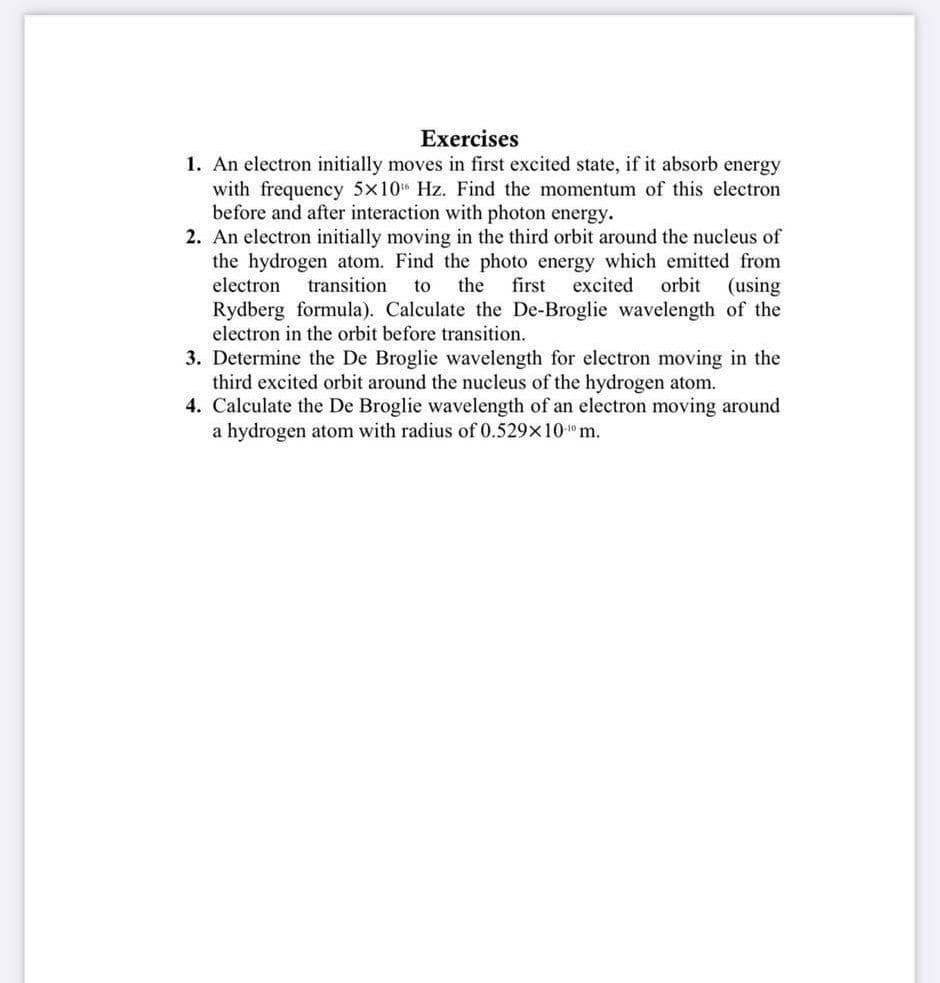Exercises 1. An electron initially moves in first excited state, if it absorb energy with frequency 5x10 Hz. Find the momentum of this electron before and after interaction with photon energy. 2. An electron initially moving in the third orbit around the nucleus of the hydrogen atom. Find the photo energy which emitted from electron transition to the first excited orbit (using Rydberg formula). Calculate the De-Broglie wavelength of the electron in the orbit before transition. 3. Determine the De Broglie wavelength for electron moving in the third excited orbit around the nucleus of the hydrogen atom. 4. Calculate the De Broglie wavelength of an electron moving around a hydrogen atom with radius of 0.529x10 m.
Exercises 1. An electron initially moves in first excited state, if it absorb energy with frequency 5x10 Hz. Find the momentum of this electron before and after interaction with photon energy. 2. An electron initially moving in the third orbit around the nucleus of the hydrogen atom. Find the photo energy which emitted from electron transition to the first excited orbit (using Rydberg formula). Calculate the De-Broglie wavelength of the electron in the orbit before transition. 3. Determine the De Broglie wavelength for electron moving in the third excited orbit around the nucleus of the hydrogen atom. 4. Calculate the De Broglie wavelength of an electron moving around a hydrogen atom with radius of 0.529x10 m.
Related questions
Question

Transcribed Image Text:Exercises
1. An electron initially moves in first excited state, if it absorb energy
with frequency 5x10 Hz. Find the momentum of this electron
before and after interaction with photon energy.
2. An electron initially moving in the third orbit around the nucleus of
the hydrogen atom. Find the photo energy which emitted from
electron
transition
to
the
first
excited
orbit
(using
Rydberg formula). Calculate the De-Broglie wavelength of the
electron in the orbit before transition.
3. Determine the De Broglie wavelength for electron moving in the
third excited orbit around the nucleus of the hydrogen atom.
4. Calculate the De Broglie wavelength of an electron moving around
a hydrogen atom with radius of 0.529x10-"m.
Expert Solution
This question has been solved!
Explore an expertly crafted, step-by-step solution for a thorough understanding of key concepts.
Step by step
Solved in 3 steps with 2 images
